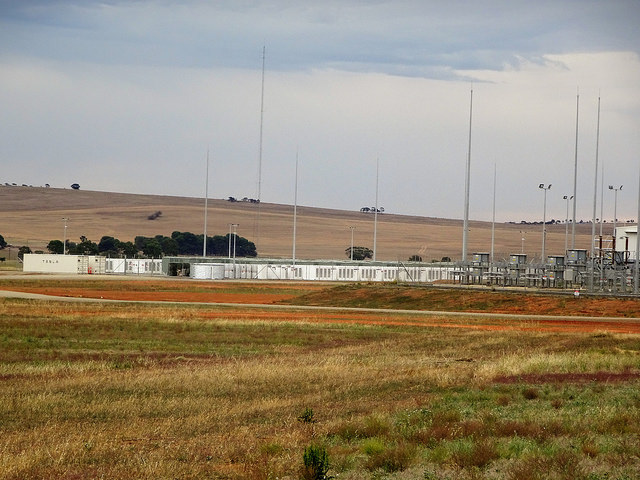Elon Musk, the founder of Tesla known for his increasingly outlandish products, has flaunted bold visions for the colonization of Mars and tunnels connecting cities across the United States amongst his proposals However, some of his most concrete work to promote a sustainable future goes relatively unnoticed, namely his burgeoning relationship with the South Australian government in the realm of energy technology. Musk’s forward-thinking energy projects in South Australia could serve as inspiration for other developed countries that promote green-technology initiatives.
Last year, the South Australian government came under intense pressure to address its emerging energy crisis. Lengthy and recurring power outages following a string of violent storms that damaged energy infrastructure plagued its nearly two million residents throughout the final months of 2016 and early 2017. Sensing a business opportunity for Tesla, Musk exchanged tweets with fellow billionaire Mike Cannon-Brookes, an Australian national, in March, promising that “Tesla will get the [backup battery] system installed and working 100 days from contract signature or it is free.” Jay Weatherill, the premier of South Australia and proponent of energy innovation, pounced on this offer. Musk set out to build the world’s most powerful lithium-ion battery as a backup storage system for a region that generates at least 40 percent of its energy from notoriously unreliable wind-based technologies. To the surprise of many, given Musk’s dubious track record of living up to self-imposed deadlines, the approximately $50 million Hornsdale Power Reserve went live before the 100 days expired and has proven successful in combating numerous power outages in the region thus far.
This initiative should be viewed as a mild success in promoting sustainable energy policies; alone, though, it is unlikely to significantly impact the composition of Australia’s energy supply moving forward. The next phase in the Musk-South Australia partnership, however, offers a more promising vision for altering energy consumption tendencies. Their newest joint venture, the South Australia Virtual Power Plant, will supply 50,000 homes with a 5kW solar panel system and 13.5kWh Tesla Powerwall 2 battery free of charge over a period of four years. The rollout has begun with 1,100 public housing units, where residents can sign up free of cost. The second phase of the project, beginning in 2019, will consist of adding 24,000 additional public homes into the system. Finally, the third phase will open the doors to the private sector, where 25,000 residents will be presented with the opportunity to buy into the power plant. This cost to private homes is still unclear.
The project will be financed initially by the South Australian government, with $1.6 million in grants and $23.6 million in loans from their Renewable Technology Fund but is estimated to cost a total of $630 million, funded through investors. Analysis by Frontier Economics suggests that the project, which essentially turns homes into interconnected power generators, would lower the energy bills of participating households by 30 percent. For a region whose inhabitants pay among the highest electricity prices in the world, a price reduction of this size would be a tremendous boon to those living there. The benefits extend beyond households with Tesla’s infrastructure; according to their plan, “excess energy would be fed back into the grid, benefiting all South Australian households through lower energy prices and added energy stability.
Elon Musk personifies one aspect of what the Australian Financial Review dubs “the great global experiment in renewable energy.” Although South Australia’s unique wind-based energy vulnerabilities certainly helped to catalyze this venture, its government clearly understands the value of public-private partnerships. The Virtual Power Plant represents a true win-win for Tesla, which expands its brand and product in a friendly overseas market, and South Australia, which benefits from climbing closer to its goal of 75 percent renewable energy by 2025 at affordable price levels. Other developed countries with clean energy infrastructure already in place, such as Germany or Italy, which are similar in profile to Australia – sharing goals of sustainability and alternative energy but struggling with high energy costs – should consider adopting this type of energy model to meet the needs of their citizens. There is no shortage of opportunity for renewable growth across green-friendly governments throughout the European Union and even within left-leaning governments in the U.S. The question is whether both public and private interests can align to produce agreements similar to those seen in Australia. If the rollout of the Virtual Power Plant begins to show signs of success, perhaps these governments may be inspired to initiate similar programs of their own.
Developing countries certainly possess a far weaker energy infrastructure than their developed counterparts. Perhaps instituting these kinds of systems before a heavy reliance on nonrenewable energy sources develops would have a greater effect on the long-term nature of their energy programs. If developing countries can successfully grow using renewable energy technology, it is unlikely that they will turn to fossil fuels in the future.
The composition of the world’s energy supply is not going to change dramatically overnight. Increasing our reliance on renewable energy sources is a slow process, but one that has shown signs of acceleration. As green technology continues to develop, so does our understanding of how to most effectively place clean energy into the hands of consumers. Within a span of ten months, Tesla and South Australia went from having no working relationship to creating a sophisticated plan to outfit 50,000 homes with solar and battery packs. This fast-paced progress should be seen as an opportunity for further growth in green energy within the region and beyond. Innovative thinking and risk-taking will be instrumental to finding novel solutions to promote clean energy, but Elon Musk and South Australia’s Jay Weatherill demonstrate that we have the ability to turn up the power in clean energy development and production.
Photo: “Hornsdale and the South Australian governments’ largest Lithium Battery in the world”
